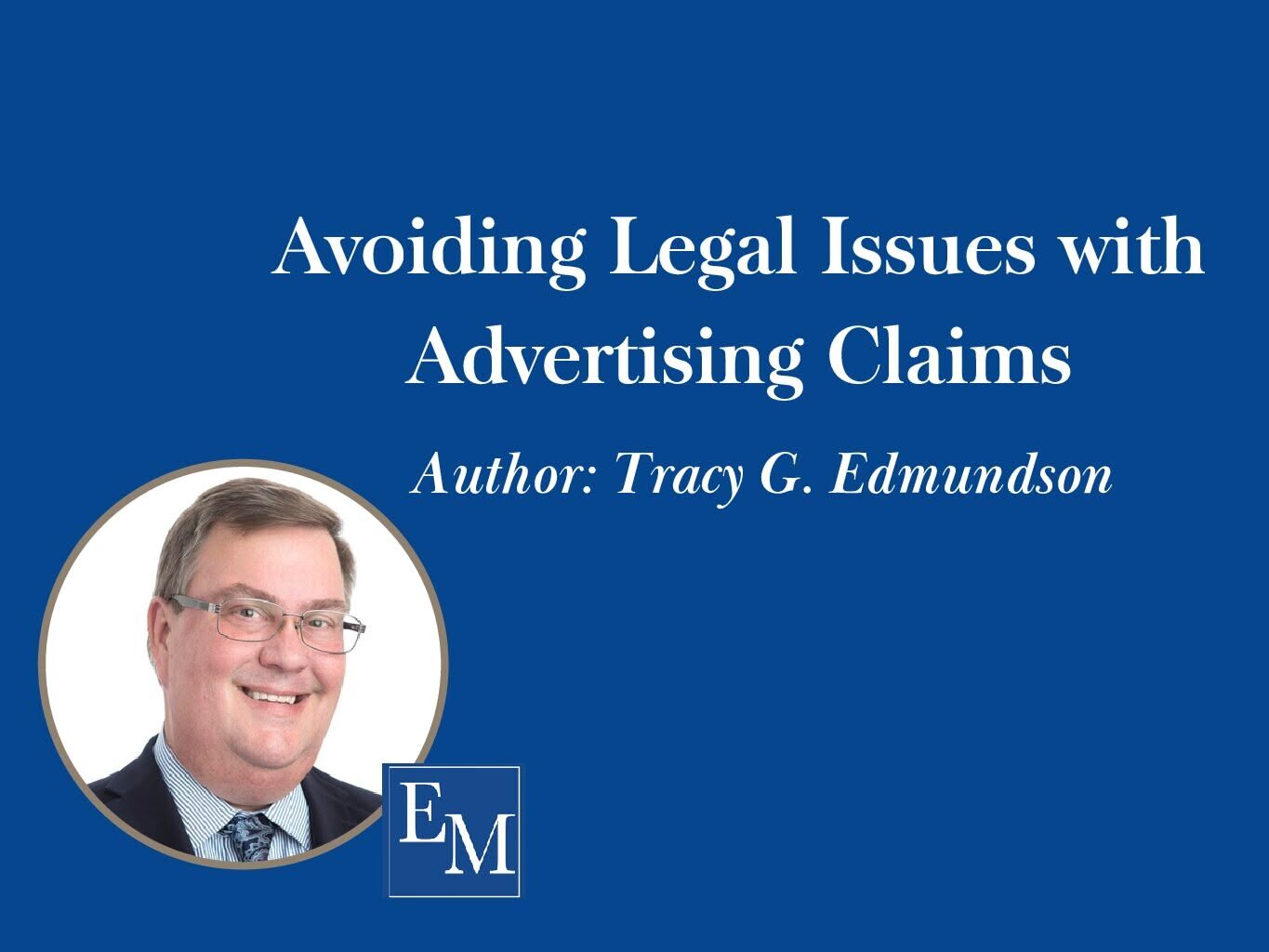Avoiding Legal Issues with Advertising Claims
Does your business advertise? Do you have a website or social media account where you promote your products or services? Do you have catalogs, brochures, or product specification sheets? Do you compare your products or services to those of competitors? If the answer to any of these questions is yes, then under federal and state law, you are probably making advertising claims, whether you know it or not, and advertising claims can create serious legal obligations and risks.
Advertising claims can create legal liability under several sources of federal and state law and regulation. The Federal Trade Commission (the FTC), state attorney generals (under state consumer protection laws), consumers, and competitors all can potentially challenge any advertising claim you might make as false or misleading. Remedies and damages can be very burdensome and expensive.
In the context of false or deceptive advertising, the FTC analyzes claims for three common elements: a representation, omission or practice that is likely to mislead the consumer; an examination of the practice from the perspective of a consumer acting reasonably in the circumstances; and the representation, omission, or practice must be a “material.” FTC Policy Statement On Deception, appended to Cliffdale Associates, Inc., 103 F.T.C. 110, 174 (1984).
Furthermore, all advertising or product claims need to be properly substantiated. That is, a company or ad agency must have a reasonable basis for making any claim prior to dissemination of that claim.
What are Advertising Best Practices?
To hopefully minimize the risk of any challenge to advertising claims, here are some guidelines:
- Claims must be truthful, non-deceptive, and accurate.
- All facts or assertions made in the advertisement must be verified and substantiated and supporting documentation for each fact or assertion should be identified and retained.
- The facts or data upon which the any claims are based must be “Competent and Reliable,” and all test procedures and results should be documented and accessible to consumers; third-party independent testing is recommended.
- Comparative claims should fairly and accurately identify products or services and their source.
- Comparative claims should include an apples-to-apples comparison of similar products or services.
- Any comparative claim should be factual in nature and based upon objectively established facts or data; conclusions should not be presented in a biased or subjective manner.
- Pre-publication reviews, surveys or consumer testing of claims should be considered to gauge likely consumer perceptions of the claims to ensure that the intended fair, accurate, and non-deceptive intent of the advertisement is likely to be perceived by the target audience.
Following these guidelines will not eliminate the possibility that your advertising claims will be challenged as false or misleading, but doing so can go a long way toward mitigating the possible risk associated with getting the word out about your business, products and services and will help to maintain and preserve your reputation in the marketplace.
This article is for general informational purposes only, does not constitute legal advice and should not be used as a substitute for competent legal advice from a licensed professional attorney.

